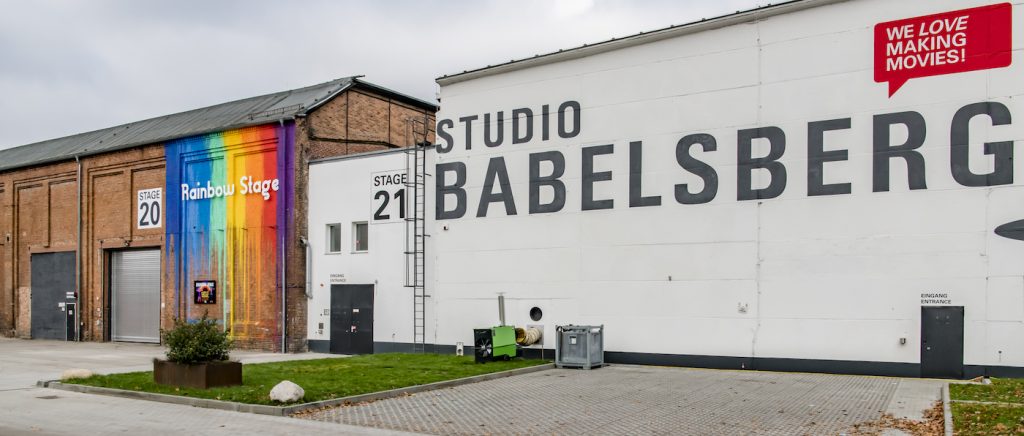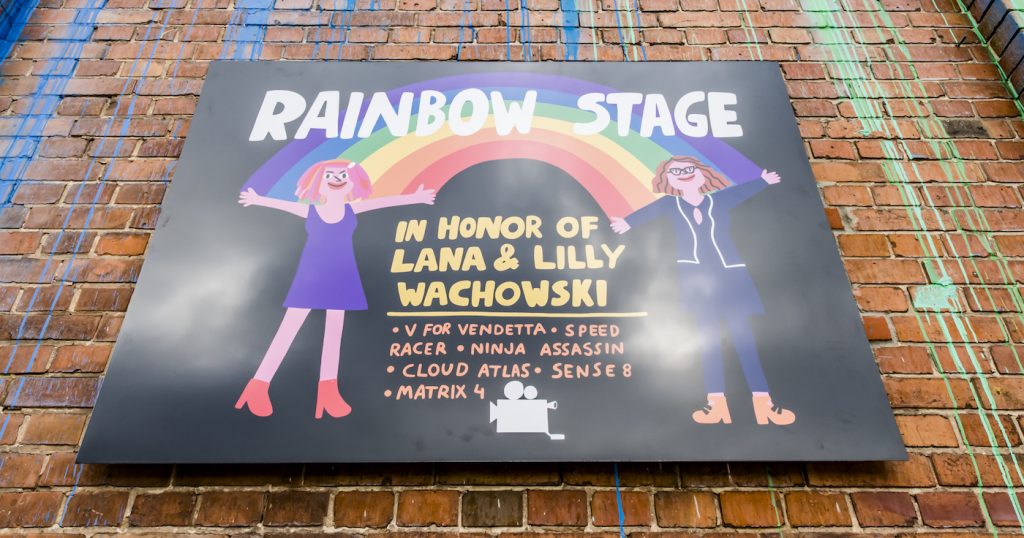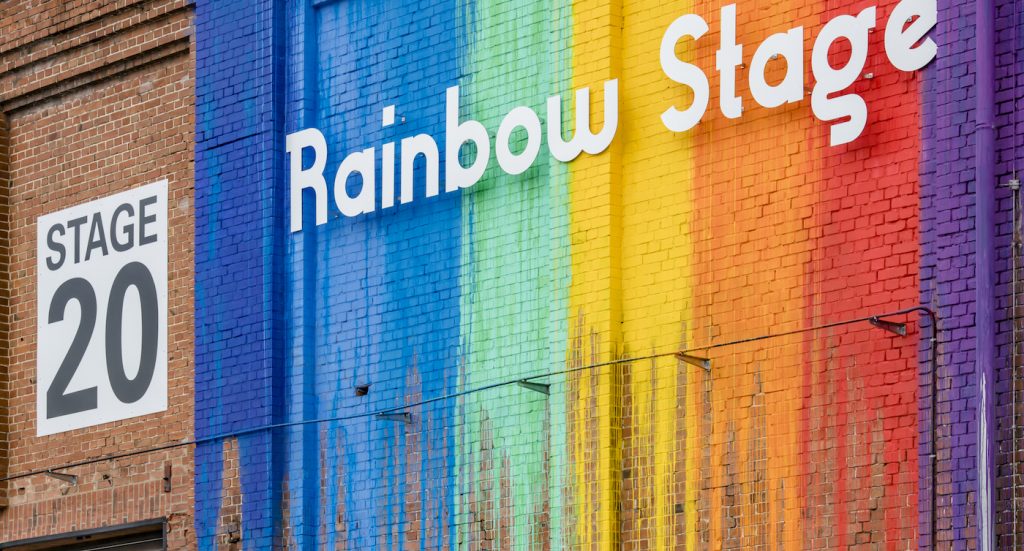Welcome to Studio Babelsberg’s Rainbow Stage—A Tribute to Lana and Lilly Wachowski
“I’ll show these people what you don’t want them to see. A world without rules and controls, without borders or boundaries. A world where anything is possible.” Neo (Keanu Reeves), The Matrix, 1999
To honor the groundbreaking filmmakers Lana and Lilly Wachowski and simultaneously promote a message of tolerance, respect, and diversity, Germany’s Studio Babelsberg in Potsdam recently renamed its largest sound stage the Rainbow Stage (its previous title was number 20 of 21). The new name was also a wrap gift to Lana Wachowski, who finished filming the fourth installment of The Matrix series at Babelsberg this year.

“For a long time, we had been thinking of a decent way to honor the Wachowskis to thank them for their commitment and trust” to the studio, says Christoph Fisser, Babelsberg’s chief operating officer. Over the past 15 years, the Wachowskis have shot five projects there together (V for Vendetta, Speed Racer, Ninja Assassin, Cloud Atlas, and the series Sense8), and “with her sixth project, Matrix 4, Lana Wachowski has shot more films here than Fritz Lang!” Fisser adds. “We used the completion of the film as an opportunity” to say thanks, as well as “to send a strong signal of solidarity with the LGBTQ+ community worldwide that reaches far beyond the film industry.”
Founded in 1912, Babelsberg may be the world’s oldest large-scale film studio, but its corporate culture is grounded in the present, and the Rainbow Stage is an outward expression of longstanding studio policy. “The LGBTQ+ activism of the Wachowskis, and the values that go with it, are values that we also live by and actively support at Studio Babelsberg,” says Fisser.

From a more historical perspective, the Wachowskis’ Rainbow Stage follows in the tradition of other Babelsberg locations named for industry luminaries who shot at the studio. The Marlene-Dietrich-Halle is where The Blue Angel was filmed in 1929, and around the premises, you’ll come across Georg-Wilhelm-Pabst-Street, Billy-Wilder-Square, and Josef-von-Sternberg-Street, among others. For the Wachowskis, however, the word ‘rainbow’ was chosen for the sound stage because it “stands for tolerance, respect and diversity, for peace and hope,” says Fisser. The new name is showcased via two pieces of art, a large-scale work in symbolic rainbow colors on the stage’s facade, curated by the American artist Alexandra Grant, and a panel dedicated to the Wachowskis by the Spanish artist duo Cachetejack (Nuria Bellver and Raquel Fanjul). Grant also suggested the font for the Rainbow Stage’s sign, “Gilbert,” in tribute to the rainbow flag’s creator, Gilbert Baker.

As a wrap gift and a tribute rolled into one, how did the name go down with the directors? “We wanted to surprise them and it definitely worked!” says Fisser. “Lana Wachowski was at the studio for the unveiling of the Rainbow Stage, and everyone who was there could see and feel that she was totally overwhelmed. She appreciated the symbolic value very much.”



